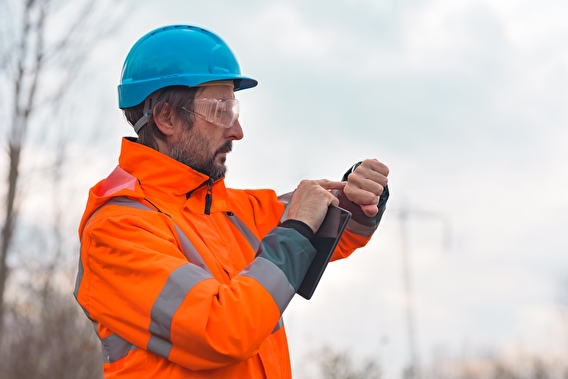
Despite ongoing safety efforts, highway maintenance and operations workers have dangerous jobs. According to the Federal Highway Administration, an average of 135 highway workers lose their lives each year because of traffic incursions and limited space for maneuvering. Wearable technology embedded in work gear offers the promise of preventing injuries and deaths—and is already being used successfully in other construction fields. The big question: Would highway workers accept this technology?
“Success in technology projects requires careful user research, and there is typically a gap between what developers think of the system and what actual users’ perceptions are—creating the potential for end users to resist adopting technologies, regardless of the benefits,” says Nichole Morris, director of the U’s HumanFIRST Laboratory and an associate research professor in the Department of Mechanical Engineering.
Morris was part of a research project supported by the National Science Foundation and led by Hamed Tabkhivayghan of the Department of Electrical and Computer Engineering at the University of North Carolina (UNC) at Charlotte. Others on the team included Omidreza Shoghli, project co-investigator, and Sepehr Sabeti, lead author, from the Department of Engineering Technology and Construction Management at UNC Charlotte.
Wearable technology—such as smart watches, glasses, wristbands, hard hats, and vests—offers a new way to increase the cognitive capabilities of people in their lives and decision making. Sensing systems, for example, can detect and warn of imminent danger. Recent advances in the technology have led to greater use in different disciplines, especially building construction, but there has been limited information about highway workers’ perceptions, concerns, and preferences.
The researchers conducted their study in two steps: a semi-structured interview with an experienced highway maintenance crew member followed by an extensive survey of the highway and operation maintenance community. The initial interview was designed to gain an impression of workers’ thoughts and beliefs, inform the design of the questionnaire, and ensure the language and general structure of the survey was suitable for highway workers.
The survey gathered demographic information, previous experience with wearable devices, the perceived practicality of wearable devices, and the likelihood of workers using the provided devices. Survey participants were separated into two groups: highway maintenance crew, and affiliated members such as state DOT members, consultants, managers, and researchers.
Results of the survey show a promising potential for wearable technology in highway work zones and an acceptable level of engagement from highway workers. Specifically, researchers found that the majority of maintenance crew seems to feel neutral about the practicality of wearable devices. Affiliated members viewed the practicality of wearable technology more positively; they thought smart clothes and glasses would be a suitable option in highway work zones, possibly due to their experience with lighting vests and safety glasses.
The researchers believe the results of this study will pave the path toward future interaction and safety system designs for highway workers.
“Based on our findings, we see a notable potential for future development and investment in wearable-enabled technologies for highway work zones,” Morris says. “We envision this study energizing developers for further research and investment in the application of wearable technology in highway work-zone safety.”
Their work is published in the proceedings of the 39th International Symposium on Automation and Robotics in Construction in a paper titled “Wearable Technology for Highway Maintenance and Operation Safety: A Survey of Workers’ Perception and Preferences.”
Writer: Megan Tsai


